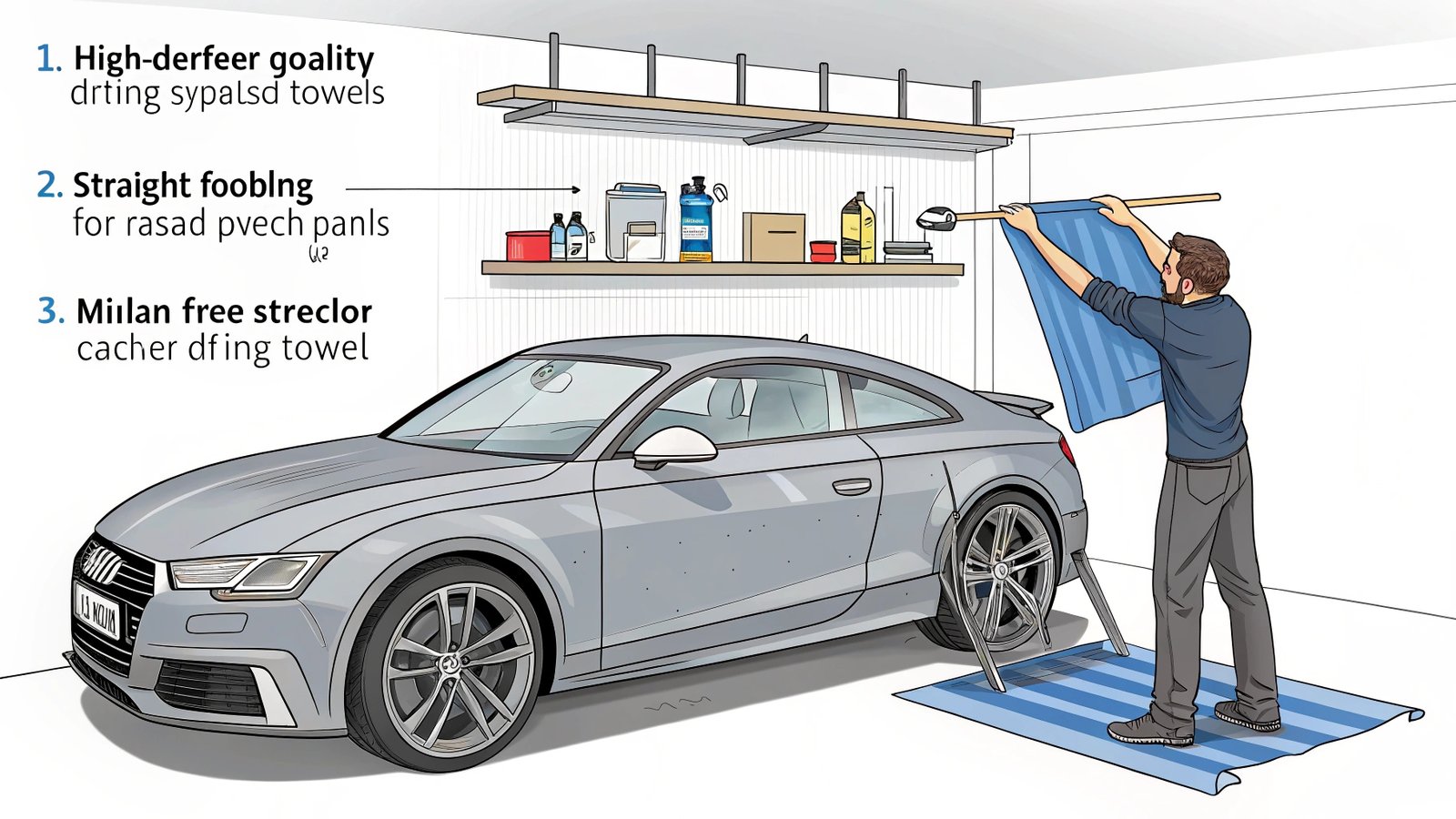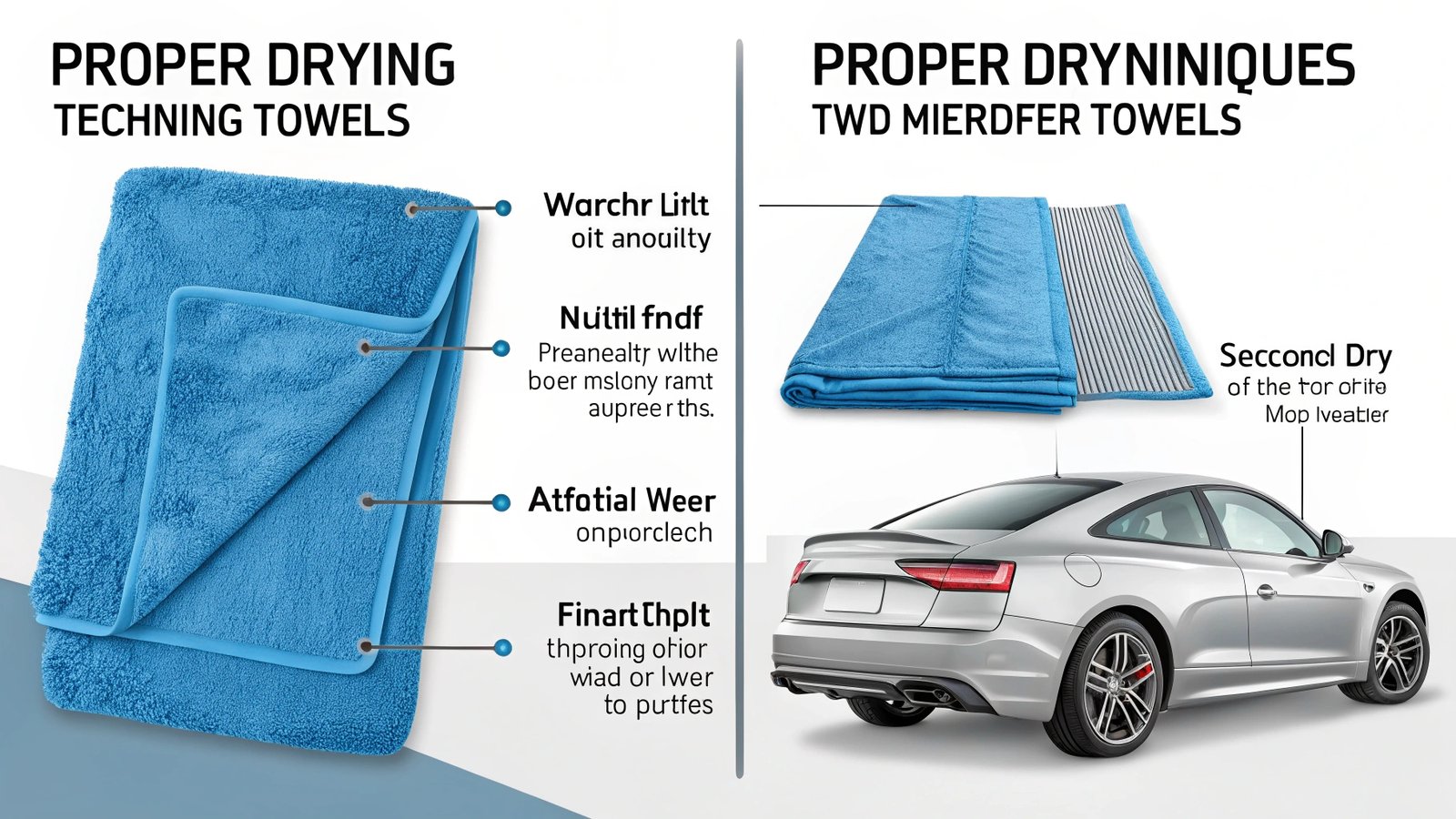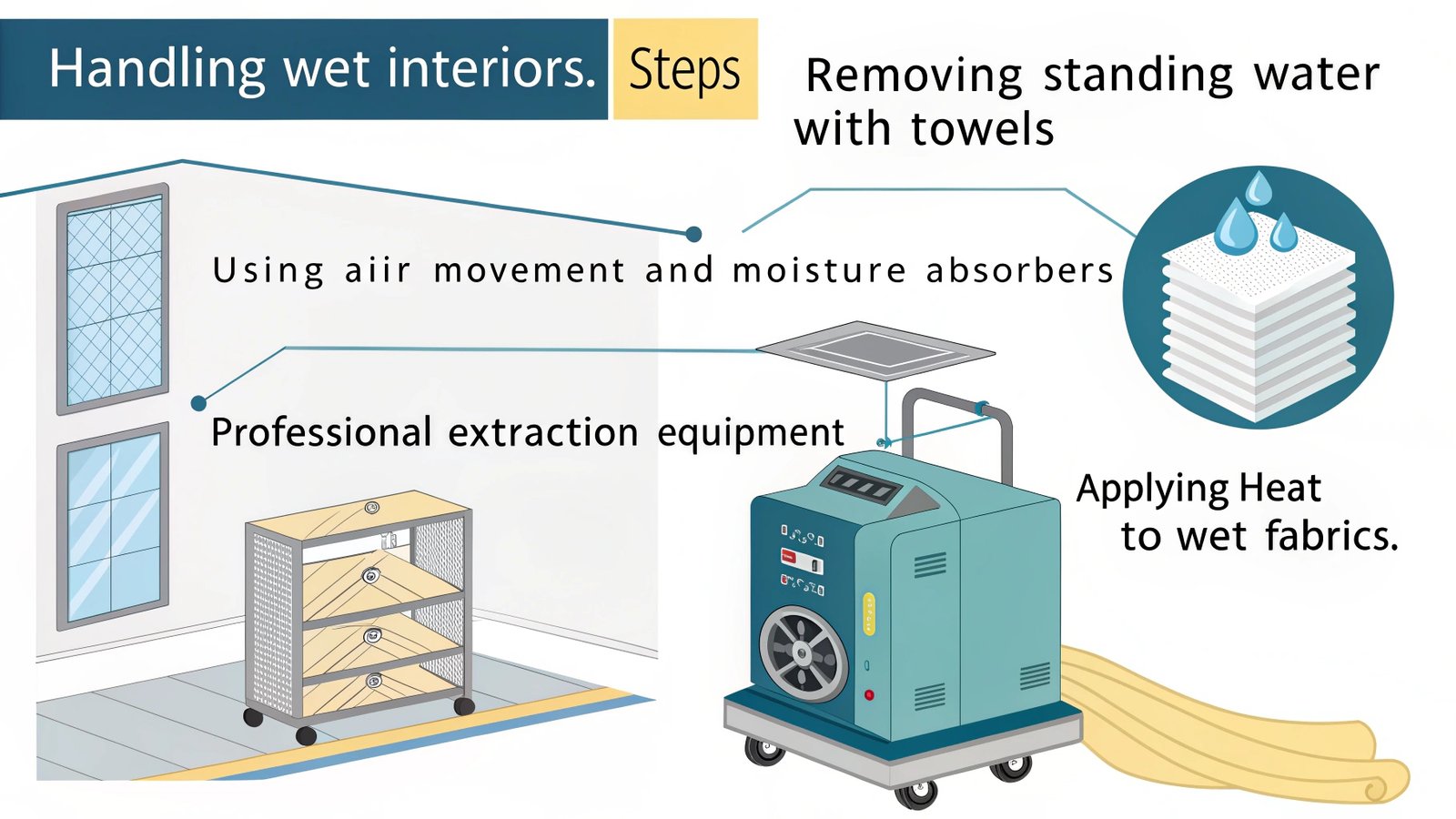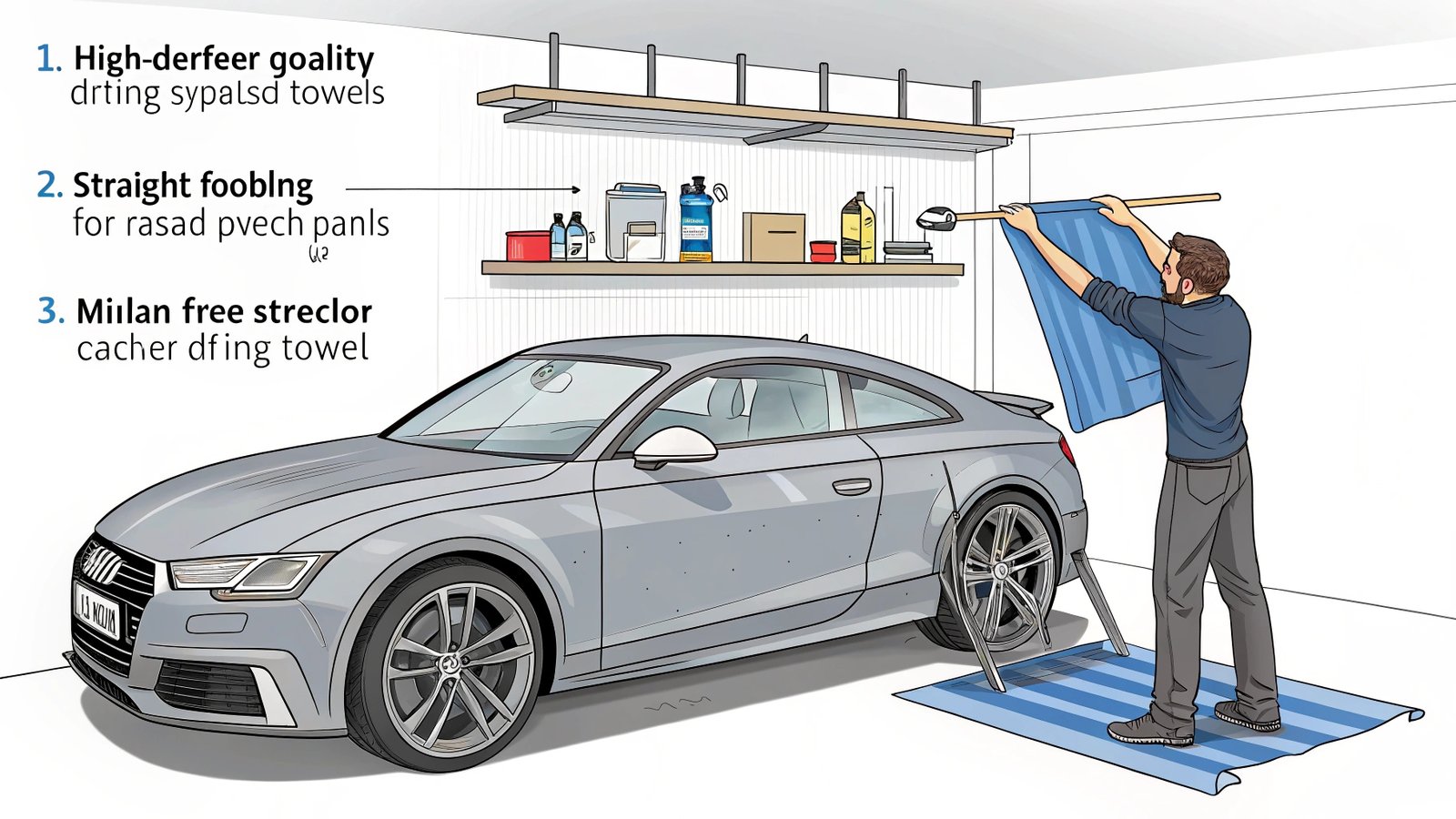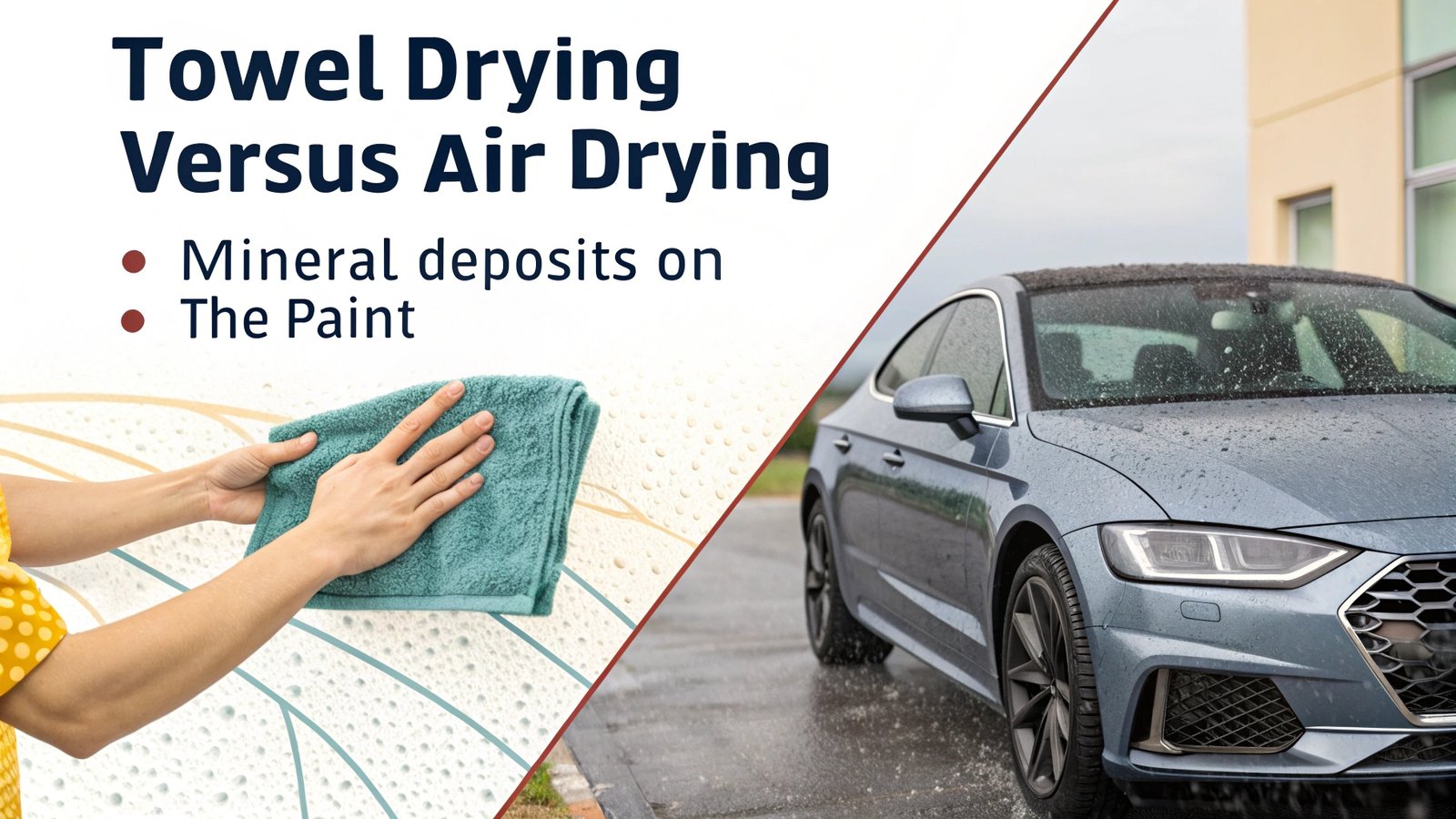Drying your car after washing it seems simple but can cause swirl marks and water spots if done wrong. Follow these proven techniques for streak-free shine.
The best way to dry your car is using a high-quality microfiber drying towel with proper technique. Microfiber absorbs more water than regular towels and won't scratch your paint. Work from top to bottom in straight lines, folding the towel frequently to use dry sections.
Most car owners don't realize how much damage improper drying causes. Let's explore the professional methods detailers use to prevent water spots and keep your paint flawless.
How to properly dry your car after washing?
Seeing water spots form after washing is frustrating. These occur when water evaporates and leaves behind mineral deposits.
Proper drying requires two microfiber towels - one plush towel for initial water removal and a second for final detailing. Work section by section, never letting water dry on its own. Dry horizontally on flat surfaces and vertically on sides to match paint texture.
Here's the step-by-step professional process:
-
Preparation:
- Wash your drying towels first to remove manufacturing residues
- Have at least two towels ready (minimum 70x40cm size)
- Work in shade if possible
-
Technique:
- Start at roof, move to windows, then body panels
- Use "sheeting" method first - let water flow off surfaces
- Blot rather than wipe on delicate areas
- Change towel sections frequently (8-10 folds per towel)
-
Post-drying:
- Check for missed spots (door jambs, mirrors)
- Use detail spray for final touch-up if needed
- Hang towels to dry completely before next use
What is the best way to dry out a wet car interior?
Spills happen, and wet upholstery can lead to mold if not handled right. Quick action prevents costly damage.
For wet interiors, first remove standing water with towels, then use air movement and moisture absorbers. For severe cases, professional extraction may be needed. Never apply heat to wet fabric - it sets stains and odors.
Address different materials properly:
| Material | Method | Tools Needed | Time Required |
|---|---|---|---|
| Fabric seats | Blot moisture, use wet/dry vacuum | Microfiber towels, extractor | 2-4 hours |
| Leather seats | Wipe gently, condition afterward | Leather cleaner, soft cloths | 1-2 hours |
| Carpet | Press towels into fibers | Absorbent towels, brush | 3-5 hours |
| Hard surfaces | Wipe dry immediately | Chamois or microfiber | 30 minutes |
Position fans to blow across surfaces, not directly at them. Place moisture absorbers under seats. Check for dampness over several days.
What is the fastest way to dry your car?
When time matters but results can't suffer, these quick-dry methods work without compromising quality.
The fastest effective drying combines water sheeting, forced air,and premium towels. Use a leaf blower or air dryer first to remove 80% of water, then finish with microfiber. Saves time while preventing swirl marks.
Speed vs. quality comparison:
| Method | Time Required | Risk of Swirls | Water Spot Risk | Equipment Cost |
|---|---|---|---|---|
| Traditional towel dry | 15-20 min | Medium | Low | $ |
| Blower + towel | 8-10 min | Low | Medium | $$ |
| Air dry only | 0 min | None | High | $ |
| Water repellent spray | 5 min | None | Low | $$$ |
Pro tip: Apply quick detailer as drying aid - it lubricates the surface and helps towels glide while adding protection.
Is it better to dry your car with a towel or air dry?
This common debate has clear answers when considering paint protection and results.
Towel drying is better than air drying for most vehicles. Microfiber towels properly remove water while air drying allows minerals to deposit on paint. However, combining both methods works best - use air first to remove bulk water, then towel dry completely.
Breakdown of each method's pros and cons:
Towel Drying
-
Pros:
- Immediate water removal
- No water spots
- Can apply protective products
- Polishes surface as you dry
-
Cons:
- Risk of swirls if done wrong
- Physical effort required
- Towels need proper care
Air Drying
-
Pros:
- No physical contact with paint
- Good for hard-to-reach areas
- Less effort required
-
Cons:
- Water spots likely
- Doesn't remove all moisture
- Doesn't provide final polish
- Wind can blow debris onto wet paint
For best results, experienced detailers recommend: 1) Sheeting rinse, 2) Blower for 80% of water, 3) Microfiber towel for final 20%, 4) Quick detailer mist for lubrication.
Conclusion
Proper car drying requires quality microfiber towels, good technique, and sometimes air assistance. Never let water air dry, and always work clean to protect your paint.

